Displaying items by tag: Royal dee
#isora – "Jackknife", owned by Royal Dee YC and Pwllheli SC member, Andrew Hall, won the very challenging 2015 Lyver Race and the first race in the 200th Anniversary Royal Dee YC Irish Sea Offshore Regatta. The 100 mile race started at 20.15 Friday 3rd July at Holyhead and finished in Dun Laoghaire with the first boat crossing the finish line after only 9 hours and 42 minutes.
The bi-ennial Lyver Race is organised by Liverpool YC in association with RORC, Royal Dee YC and ISORA and run with the assistance of Holyhead SC and the National YC.
25 boats came to the start line at Holyhead. The course for the race used all virtual waypoint marks. The 100 mile course was:
Start ( Holyhead)
W1 - 53° 30'N 5° 00'W (S)
W2 - 54° 00'N 5° 30'W (P)
Finish (Dun Laoghaire)
The course was largely determined to avoid the TSS zone to the north of Holyhead although the zone was not an excluded area in the race. The second leg took the fleet north-west towards Isle of Man.
The forecast for the race was for light easterly winds to increase to fresh and veer to the south west and later to increase further. Although gales were forecast on the west and south coasts of Ireland, nothing untoward was expected in the race area. The tides on the day were very strong springs and it had just turned north at the start of the race.
The race started in "champagne" sailing conditions with a light-moderate easterly wind. The fleet crossed the start line under spinnaker and a rapid advance was made by the fleet towards the first mark 17 miles away at a direction of 305°. During the first leg the easterly winds increased and were touching 20+ knots by the time the fleet arrived. The second leg was a "harden up" to 330° for 33 miles. Shortly after the first boats had rounded W1 the first signs of "what was to come" became apparent. The winds increased to 25-28 knots and remained easterly – that was not the plan!!
The seas driven by the strong easterly winds became sizable and the winds became gusty making spinnakers in a tight reach very difficult to control. After several gusts of over 30 knots hit the fleet, it became obvious to most boats that holding the spinnaker in those conditions was not very bright.The winds continued to increase touching 30 knots with higher gusts and the seas increased. As the fleet rounded W2, to add to the atmosphere, thunder and lightning started with heavy rain. The scene around the W2 was bizarre with red and green lights everywhere and going in all directions as there appeared to be a unanimous decision by all Skippers to reef their mains.
With boats rigged for heavy weather the fleet headed on the 50 mile reach towards Dun Laoghaire. As the first boats approached the finish, the wind started to veer. While the lead boats arrive comfortably the later boats were beating for the finish.
"Jackknife" crossed the line first after only 9 hours 42 minutes, over 1 hour clear of the next boat, Alan Hannon's "Katsu" from RUYC.
"Jackknife" took line honours, 1st Overall and 1st in Class 1. Liam Shanahan's J109, "Ruth", from the NYC, sailed an amazing race and took 2nd overall and class 1. Third overall and Class 1 was won by Keith and Rodney Martin's First 44.7, "Lively Lady" from the RIYC. Class 2 was won by Andy Napper's, "Bada Bing" from Liverpool YC. Another LYC boat Adam Kyffin's "Easy Tiger" took second place while Liam Coyne's "Lula Belle" from the NYC took 3rd place. Three boats sailed the race 2-handed and Conor Fogerty's "Bam" from HYC was presented with a special prize. Last to finish, and just before the time limit of 20.00, was Tom Hare's Westerly GK24, "Di Rich" from LYC. In the true spirit of offshore racing, Tom and crew received a huge applaud from their fellow competitors as they tied up at the NYC.
After the race the crews gathered in the NYC for the usual offshore race "après sail" before the prize-giving. Prizes were presented by Royal Dee YC Commodore Derek Matthews. RORC Commodore Michael Boyd was to be there to present the RORC medallions but travel problems prevented him attending.
The Lyver Race was a fitting start to the Royal Dee YC's 200th Anniversary Offshore Championship. The championship consists of five races - the Lyver Race and the four Offshore Series races as part of the Volvo Dun Laoghaire Regatta. While boats taking part in those races qualify for the RDYC prizes only those boats who take part in all five races qualify for the overall prizes and the championship title.
The next ISORA race is the Adrian Lee & Partners "Lighthouse Race". A day race on the 18th July, starting and finishing in Dun Laoghaire.
























































